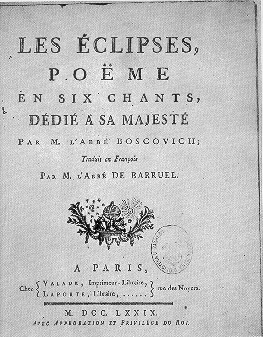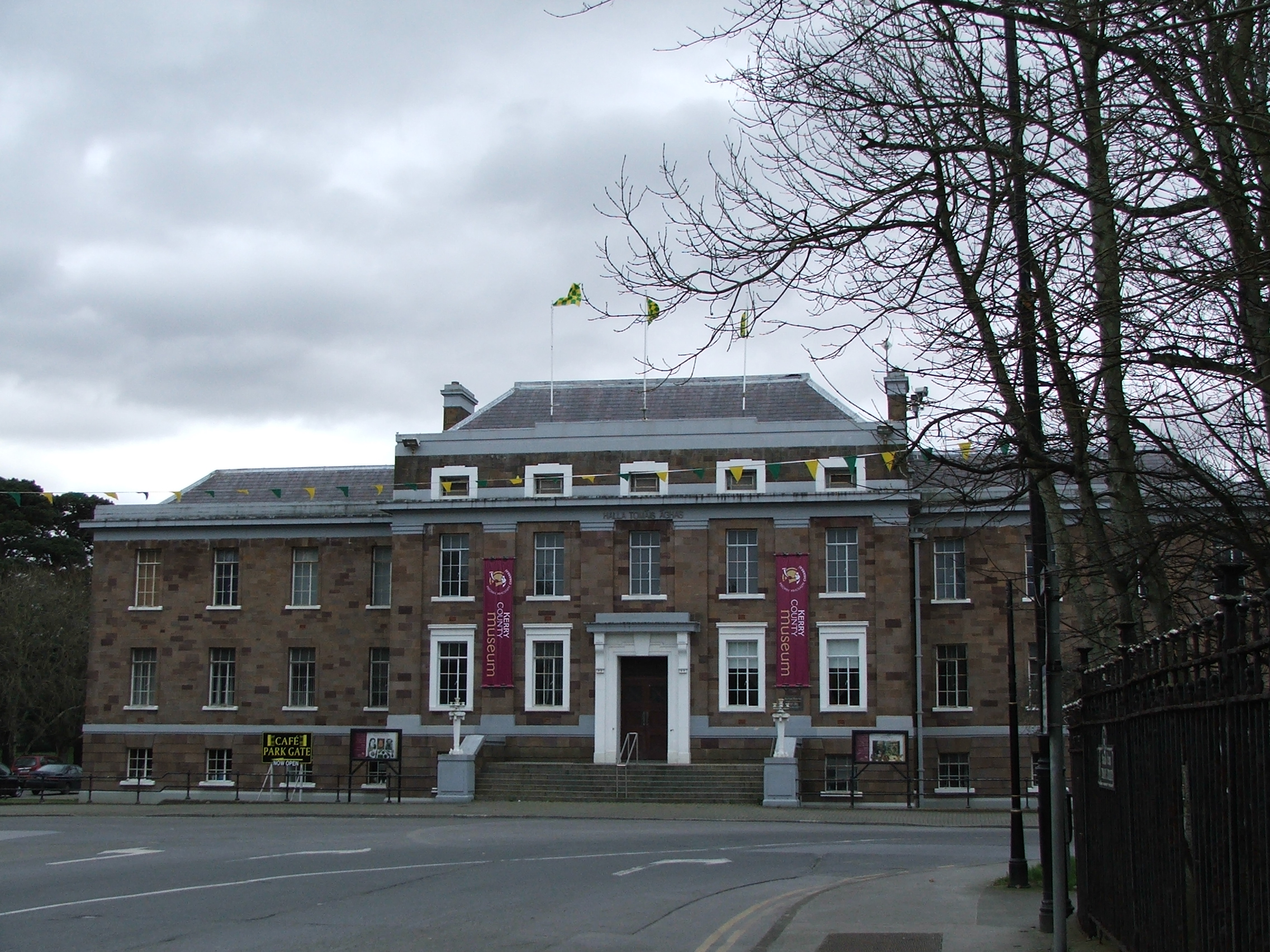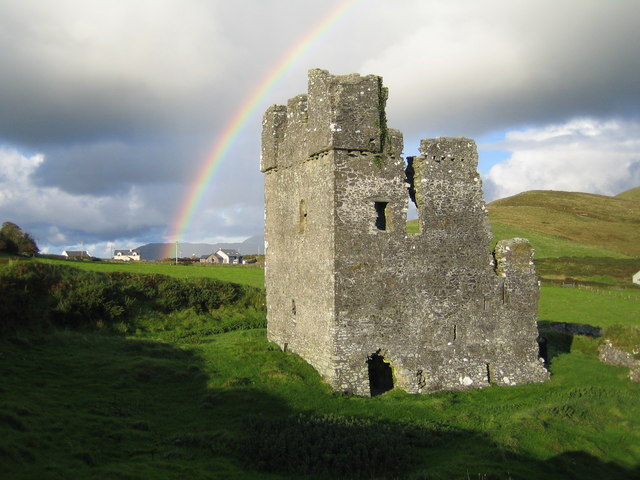|
Alexander Nimmo
Alexander Nimmo FRSE MRIA MICE HFGS (1783 – January 20, 1832) was a Scottish civil engineer and geologist active in early 19th-century Ireland. Life and career Nimmo was born in Cupar, Fife in 1783, the son of a watchmaker, and grew up in Kirkcaldy. He may have been educated at Kirkcaldy Burgh School, then studied at the University of St Andrews and University of Edinburgh. His first role was as Rector of Inverness Royal Academy in 1802, aged only 19. Around 1805, he became a Commissioner for the Scottish Boundaries Commission. In 1811 he was elected a Fellow of the Royal Society of Edinburgh for his contributions to marine geology. His proposers were George Steuart Mackenzie, Alexander Christison, and Thomas Allan. From 1811, he worked in Ireland as an engineer, with his first major task being for the Commission for the Reclamation of Irish Bogs. This was apparently on the recommendation of Thomas Telford. In 1814, he designed a new harbour at Dunmore in Waterford. ... [...More Info...] [...Related Items...] OR: [Wikipedia] [Google] [Baidu] |
Government Of Ireland
The Government of Ireland ( ga, Rialtas na hÉireann) is the cabinet that exercises executive authority in Ireland. The Constitution of Ireland vests executive authority in a government which is headed by the , the head of government. The government is composed of ministers, each of whom must be a member of the , which consists of and . The Taoiseach must be nominated by the Dáil, the house of representatives. Following the nomination of the , the President of Ireland appoints the to their role. The President also appoints members of the government, including the , the deputy head of government, on the nomination of the and their approval by the . The government is dependent upon the Oireachtas to pass primary legislation and as such, the government needs to command a majority in the in order to ensure support and confidence for budgets and government bills to pass. The Government is also known as the cabinet. The current government took office on 17 December 2022 with Leo ... [...More Info...] [...Related Items...] OR: [Wikipedia] [Google] [Baidu] |
Alexander Christison
Alexander Christison FRSE (1751–1820) was a Scottish educator and mathematician during the Scottish Enlightenment. Life He was born in 1753, at Redpath House, Longformacus, Berwickshire. He was the eldest of seven children to a tenant sheep-farmer in the Lammermuir Hills. After a local education he began employment as the local schoolteacher for the parish of Edrom before attending the University of Edinburgh to study Classics, graduating in 1775. This background gave him access to teach at a higher calibre of school and he taught both at George Watson’s College, Dalkeith Grammar School and the High School in Edinburgh. In the 1780s he lived at Alexander's Land in the Bristo area. He was elected a Fellow of the Royal Society of Edinburgh in 1800 his main proposer being the physician, James Gregory. He trained under John Hill at the University of Edinburgh and graduated MA in 1806, and from that date he served as Professor of Humanity at the University. He died in Edin ... [...More Info...] [...Related Items...] OR: [Wikipedia] [Google] [Baidu] |
1783 Births
Events January–March * January 20 – At Versailles, Great Britain signs preliminary peace treaties with the Kingdom of France and the Kingdom of Spain. * January 23 – The Confederation Congress ratifies two October 8, 1782, treaties signed by the United States with the United Netherlands. * February 3 – American Revolutionary War: Great Britain acknowledges the independence of the United States of America. At this time, the Spanish government does not grant diplomatic recognition. * February 4 – American Revolutionary War: Great Britain formally declares that it will cease hostilities with the United States. * February 5 – 1783 Calabrian earthquakes: The first of a sequence of five earthquakes strikes Calabria, Italy (February 5–7, March 1 & 28), leaving 50,000 dead. * February 7 – The Great Siege of Gibraltar is abandoned. * February 26 – The United States Continental Army's Corps of Engineers is disbanded. * March 5 ... [...More Info...] [...Related Items...] OR: [Wikipedia] [Google] [Baidu] |
Roger Joseph Boscovich
Roger Joseph Boscovich ( hr, Ruđer Josip Bošković; ; it, Ruggiero Giuseppe Boscovich; la, Rogerius (Iosephus) Boscovicius; sr, Руђер Јосип Бошковић; 18 May 1711 – 13 February 1787) was a physicist, astronomer, mathematician, philosopher, diplomat, poet, theologian, Jesuit priest, and a polymath from the Republic of Ragusa.Biography: Roger Joseph Boscovich, S.J. Fairchild University website. He studied and lived in Italy and France where he also published many of his works. Boscovich produced a precursor of and made many contributions to |
Poulaphouca
Poulaphouca, officially Pollaphuca (), is the name of a waterfall and bridge on the River Liffey between County Wicklow and County Kildare. It is primarily known for its hydroelectric generating station and the associated artificial lake, known as Poulaphouca Reservoir, Poulaphouca Lake, or Blessington Lakes. The once-famous Poulaphouca Waterfall has little water running over it any longer because of the hydroelectric project. Poulaphouca waterfall and bridge A waterfall immediately west of the bridge, renowned as a beauty spot from at least the 18th century, was lost with the construction of the Poulaphouca Reservoir. The waterfall, marked as '''Poolapooka - a remarkable cataract''' on Noble & Keenan's map of 1752, is depicted and described in the ''Post-Chaise Companion'' of 1786, when Ballymore parish was still within Dublin: Both Pollaphuca Bridge and a second bridge, crossing a dry gorge 150m to the southwest, were designed by Alexander Nimmo in Gothic style and built ... [...More Info...] [...Related Items...] OR: [Wikipedia] [Google] [Baidu] |
Dublin
Dublin (; , or ) is the capital and largest city of Republic of Ireland, Ireland. On a bay at the mouth of the River Liffey, it is in the Provinces of Ireland, province of Leinster, bordered on the south by the Dublin Mountains, a part of the Wicklow Mountains range. At the 2016 census of Ireland, 2016 census it had a population of 1,173,179, while the preliminary results of the 2022 census of Ireland, 2022 census recorded that County Dublin as a whole had a population of 1,450,701, and that the population of the Greater Dublin Area was over 2 million, or roughly 40% of the Republic of Ireland's total population. A settlement was established in the area by the Gaels during or before the 7th century, followed by the Vikings. As the Kings of Dublin, Kingdom of Dublin grew, it became Ireland's principal settlement by the 12th century Anglo-Norman invasion of Ireland. The city expanded rapidly from the 17th century and was briefly the second largest in the British Empire and sixt ... [...More Info...] [...Related Items...] OR: [Wikipedia] [Google] [Baidu] |
Kerry County Council
Kerry County Council ( ga, Comhairle Contae Chiarraí) is the authority responsible for local government in County Kerry, Ireland. As a county council, it is governed by the Local Government Act 2001. The council is responsible for housing and community, roads and transportation, urban planning and development, amenity and culture, and environment. The council has 33 elected members. Elections are held every five years and are by single transferable vote. The head of the council has the title of Cathaoirleach (Chairperson). The county administration is headed by a Chief Executive, Moira Murrell. The county town is Tralee. History 1898 to 1922 Following the independence of the Irish Free State, responsibility for local government was taken by the new government. Kerry County Council was created by the Local Government (Ireland) Act 1898, legislation passed by the Parliament of the United Kingdom, of which Ireland formed a part at that time. The 1898 act introduced elected count ... [...More Info...] [...Related Items...] OR: [Wikipedia] [Google] [Baidu] |
County Kerry
County Kerry ( gle, Contae Chiarraí) is a county in Ireland. It is located in the South-West Region and forms part of the province of Munster. It is named after the Ciarraige who lived in part of the present county. The population of the county was 155,258 at the 2022 census, A popular tourist destination, Kerry's geography is defined by the MacGillycuddy's Reeks mountains, the Dingle, Iveragh and Beara peninsulas, and the Blasket and Skellig islands. It is bordered by County Limerick to the north-east and Cork County to the south and south-east. Geography and subdivisions Kerry is the fifth-largest of Ireland's 32 traditional counties by area and the 16th-largest by population. It is the second-largest of Munster's six counties by area, and the fourth-largest by population. Uniquely, it is bordered by only two other counties: County Limerick to the east and County Cork to the south-east. The county town is Tralee although the Catholic diocesan seat is Killarney, whi ... [...More Info...] [...Related Items...] OR: [Wikipedia] [Google] [Baidu] |
Knightstown, County Kerry
Knightstown (, also ) is the largest settlement on Valentia Island, County Kerry, in Ireland. It lies within the townland of Farranreagh, at the eastern tip of the island. As of the CSO census of 2016, Knightstown had a population of 243. History In 1830 Maurice FitzGerald, the 18th Knight of Kerry, commissioned Scottish engineer Alexander Nimmo to draw up plans for a new village. During the 1840s, development began on what was initially known as the New Town of Valentia. Locality The local RNLI lifeboat station moved to Knightstown in 1869 from Reenard Point and has since been known as the Valentia Lifeboat Station. There is a selection of local coffee shops and bars in the town, as well as Roman Catholic and Church of Ireland churches. Knightstown is also the location of the car ferry connection between Valentia Island and Reenard Point on the mainland. The area served as a base of operations for the laying of the first successful Transatlantic telegraph cable to ... [...More Info...] [...Related Items...] OR: [Wikipedia] [Google] [Baidu] |
Valentia Island
Valentia Island () is one of Ireland's most westerly points. It lies off the Iveragh Peninsula in the southwest of County Kerry. It is linked to the mainland by the Maurice O'Neill Memorial Bridge at Portmagee. A car ferry also departs from Reenard Point to Knightstown, the island's main settlement, from April to October. Another, smaller village named Chapeltown sits at roughly the midpoint of the island, from the bridge. Valentia Island's permanent population is 665 (). It is about long by almost wide, making it the fifth-biggest island off the Irish coast. Name The English name 'Valentia' or 'Valencia' Island does not come from the Spanish city of Valencia. Instead it comes from the Irish name of Valentia Harbour, ''cuan Bhéil Inse'', "harbour-mouth of the island". It was anglicized as 'Bealinche' and 'Ballentia' before evolving into 'Valentia'. It is possible the spelling was influenced by Spanish sailors; there is a grave marker to Spanish sailors lost at sea in th ... [...More Info...] [...Related Items...] OR: [Wikipedia] [Google] [Baidu] |
Knight Of Kerry
Knight of Kerry (), also called The Green Knight, is one of three Hiberno-Norman hereditary knighthoods, all of which existed in Ireland since feudal times. The other two were The White Knight (surname fixed as Fitzgibbon), being dormant since the 19th century, and the Knight of Glin (The Black Knight), dormant since 2011. All three belong to the FitzMaurice/FitzGerald Dynasty commonly known as the Geraldines being created by the Earls of Desmond for their kinsmen. Sir Maurice Buidhe FitzJohn, 1st Knight of Kerry, was the illegitimate son of John FitzGerald, 1st Baron Desmond (d. 1261 Battle of Callann), son of Thomas FitzMaurice, Lord OConnello, son of Maurice FitzGerald, Lord of Lanstephan, son of the Princess Nest ferch Rhys of Deheubarth and Gerald de Windsor. Knights of Kerry *Sir Maurice Buidhe FitzJohn, 1st Knight of Kerry * Sir Richard FitzMaurice, 2nd Knight of Kerry * Sir Maurice FitzRichard, 3rd Knight of Kerry (married Margaret de Courcy in 1382) * Sir Edmond ... [...More Info...] [...Related Items...] OR: [Wikipedia] [Google] [Baidu] |
Cobh
Cobh ( ,), known from 1849 until 1920 as Queenstown, is a seaport town on the south coast of County Cork, Ireland. With a population of around 13,000 inhabitants, Cobh is on the south side of Great Island in Cork Harbour and home to Ireland's only dedicated cruise terminal. Tourism in the area draws on the maritime and emigration legacy of the town. Facing the town are Spike and Haulbowline islands. On a high point in the town stands St Colman's, the cathedral church of the Roman Catholic Diocese of Cloyne. It is one of the tallest buildings in Ireland, standing at 91.4 metres (300 ft). Name The village, on the island, was known as "Ballyvoloon", a transliteration of the Irish "Baile Ui-Mhaoileoin" (en: "O'Malone's place"), while the Royal Navy port, established in the 1750's, became known as "The Cove of Cork" or "Cove". The combined conurbation was renamed to "Queenstown", in 1849, during a visit by Queen Victoria. The name was changed to ''Cobh'', during the Irish War o ... [...More Info...] [...Related Items...] OR: [Wikipedia] [Google] [Baidu] |
.jpg)





_2.jpg)


